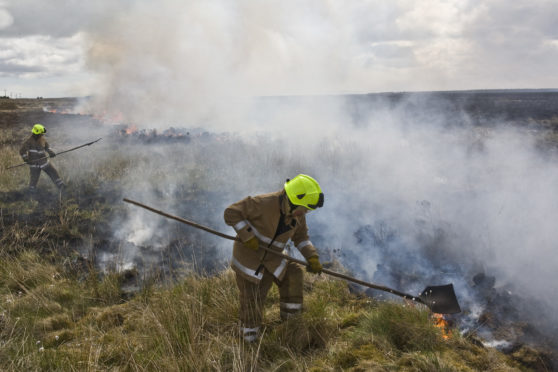A nature expert has warned campers against the dangers of starting fires on peaty soil.
Yesterday, it was revealed there has been a 750% increase in the time spent by Scotland’s fire service battling wildfires in the last decade, from 626 hours in 2009/10, to 5,332 hours last year.
Adam Streeter-Smith, access officer for the Cairngorms National Park Authority, has explained that out-of-control blazes can cause the very soil to ignite, creating the potential for widespread damage to natural environments which conservationists are keen to protect.
In an online article for the website Walk Highlands, Mr Streeter-Smith said: “With our progressive rights of responsible access, wild camping is popular in the national park.
“But accidental fires and campfires getting out of control are a major risk to the long-term conservation and habitat restoration objectives of the park.
“It isn’t just the trees we need to protect, it is the peaty soils too.
“The Scottish Outdoor Access Code is clear, it says there should be no fires lit on peaty soils.”
Mr Streeter-Smith explained that the James Hutton Institute roughly defines peaty soils as acid, nutrient-deficient soils which support areas of conservation interest, like heather moorland and native pinewoods.
He added: “Looking at a soil map highlights the fact that significant areas of the national park are peaty soils.
“The problem is that fires in peaty soils can flare up long after the wild camper has moved on.
“The careful ring of stones they responsibly created to contain the fire doesn’t stop it burning downwards.
“Even small fires can be hard to put out, needing a lot of digging and dousing with water.
“Even if the peat doesn’t catch fire, the damage to the ground underneath can take a long time to recover, and often needs the rangers to dig it out and replace the scar with nearby turfs.”
The access ranger said that, for those wishing to camp around a roaring fire, the best approach is to look out for signs provided by land owners and ranger services showing safe sites to do so, or use locations like lochsides and riverbanks that have plenty of sand and shingle to prevent any flames from spreading.










